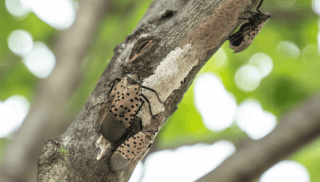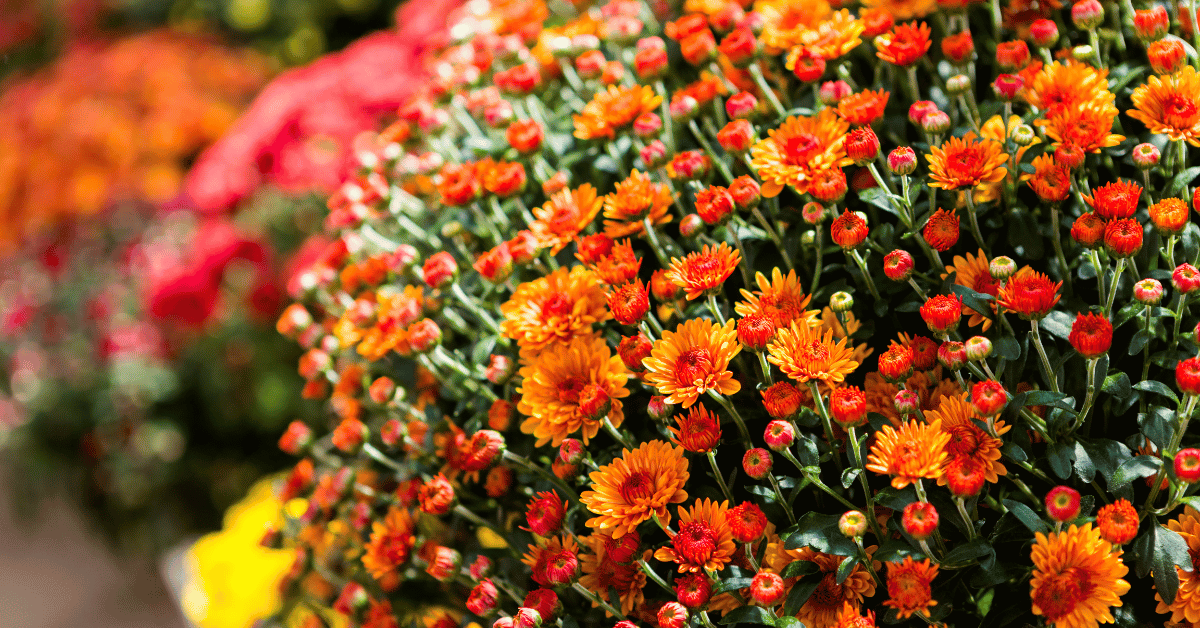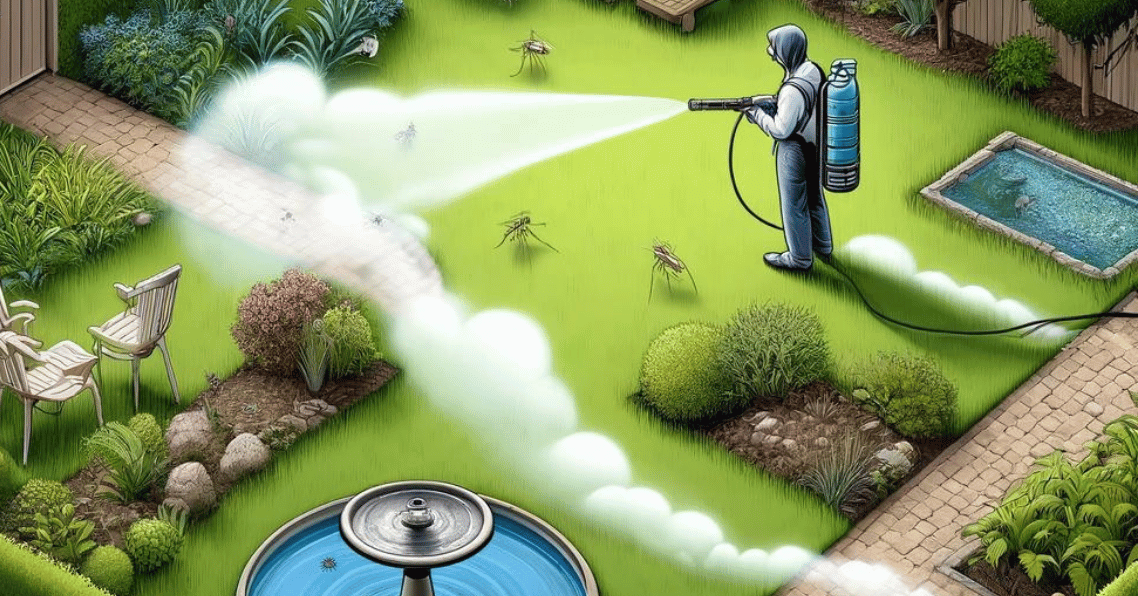The spotted lanternfly (Lycorma delicatula) is an invasive insect that has seriously threatened trees, agriculture, and the environment in various parts of the United States, particularly in Pennsylvania. Strobert Tree Services is committed to providing valuable information on identifying, preventing, and treating infestations of this destructive pest. In this article, we will explore what spotted lanternflies are, how to identify their eggs, which trees they affect, the damage they cause, and most importantly, how to get rid of them effectively.
What Does a Lantern Fly Look Like?
The spotted lanternfly (Lycorma delicatula) is a visually distinctive insect, making it relatively easy to identify once you know what to look for. Here are some key characteristics:
- Adult Stage: At rest, adult lanternflies are approximately 1 inch long and 1/2 inch wide. Their forewings are light brown with black spots, while their hind wings are red with black spots and a white band. The abdomen is yellow with black bands, adding to their striking appearance. When at rest, their wings fold tent-like over their back, showcasing a mix of colors and patterns.
- Nymph Stage: Before adulthood, lanternflies go through several nymph stages, each with distinct appearances. Early nymphs are black with white spots and are very small, growing larger as they molt. In the later nymph stages, they turn red with black and white spots, making them quite noticeable against green foliage.
- Egg Masses: Spotted lanternflies lay their eggs in masses that resemble a smear of mud. These masses are usually found on tree trunks, rocks, and even outdoor furniture. Each mass contains 30-50 eggs and is covered with a waxy, mud-like coating that can be mistaken for a small patch of dirt or sap.
How to Identify Spotted Lanternfly Eggs
One of the keys to managing spotted lanternfly infestations is early detection, which includes identifying their eggs. Lanternfly egg masses are laid in the fall and throughout the winter months.
Here's how to identify them:
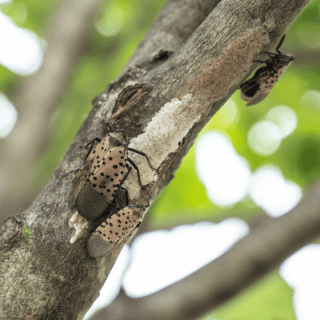
1. Look for Gray, Putty-Like Masses: Spotted lanternfly eggs are laid in masses that resemble gray, putty-like substances. These masses can be found on various surfaces, including tree trunks, branches, and man-made structures like fences and vehicles.
2. Check for a Slight Yellowish Tint: The egg masses may have a slight yellowish tint. They are often covered in a mud-like substance for protection.
3. Size and Shape: These masses are typically about one inch long and half an inch wide, but they can vary in size. Small nymphs emerge When the eggs hatch and can infest nearby plants.
If you come across spotted lanternfly egg masses, it's crucial to take action to prevent them from hatching and spreading.
What Trees are Affected by Spotted Lanternfly
Spotted lanternflies have many host plants, including trees, vines, and ornamental plants. Some of the trees most commonly affected by these pests include:
1. Ailanthus (Tree of Heaven): Spotted lanternflies are particularly drawn to the Tree of Heaven, often used as their primary host.
2. Fruit Trees: They also target fruit trees like apple, cherry, and plum, which can devastate orchards.
3. Hardwood Trees: Oak, maple, and walnut trees are among the hardwood trees that can suffer significant damage.
4. Ornamental Trees and Shrubs: Many ornamental trees and shrubs, such as roses and azaleas, are susceptible to spotted lanternfly infestations.
It's crucial to monitor these trees and plants for signs of infestation and take preventive measures to protect them.
Spotted Lanternfly Tree Damage
Spotted lanternflies cause damage by feeding on the sap of trees and plants, resulting in a variety of negative effects:
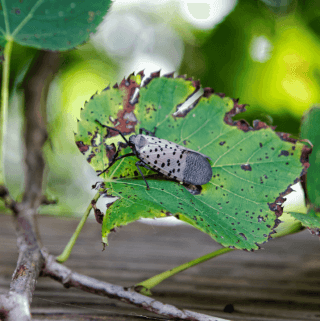
- Sap Oozing and Weeping: One of the earliest signs of spotted lanternfly infestation is sap oozing from wounds on the tree bark. The insects use their piercing-sucking mouthparts to feed on the sap, causing the tree to exude a sticky substance. This sap can attract other insects and promote mold growth.
- Sooty Mold: The sap excreted by spotted lanternflies, known as honeydew, provides a fertile ground for sooty mold, a black, powdery fungus. This mold can cover leaves, branches, and even the ground beneath infested trees, interfering with photosynthesis and reducing the plant's overall health.
- Leaf Damage: Lanternflies feed on the sap from leaves, leading to wilting, curling, and yellowing. In severe cases, the leaves may fall prematurely, weakening the tree and making it more susceptible to other pests and diseases.
- Stunted Growth: Continuous feeding by large populations of spotted lanternflies can stress the tree, leading to stunted growth and reduced fruit and flower production. This can significantly impact agricultural yields and ornamental tree aesthetics.
How to Get Rid of Spotted Lanternfly
- Scraping Egg Masses: In late fall and winter, scrape spotted lanternfly egg masses off trees, rocks, or other surfaces where they are laid. Dispose of them by placing them in a plastic bag with rubbing alcohol or burning them.
- Use Sticky Bands or Tape: Wrap tree trunks with sticky bands or tape during the nymph stage to capture crawling lanternflies. This can help reduce their population.
- Chemical Control: If infestations are severe, consider using insecticides labeled for spotted lanternfly control. Following the instructions and safety precautions on the product label is essential.
- Tree Banding: Banding trees with sticky tape during the adult stage can capture lanternflies as they climb up the tree to feed.
- Natural Predators: Encourage natural predators like birds, spiders, and praying mantises, which can help control lanternfly populations.
FAQs
What Eats Spotted Lanternfly? Several natural predators of spotted lanternflies include birds, spiders, and mantises. Encouraging these predators in your area can help control lanternfly populations.
Are Lanternflies Dangerous? While spotted lanternflies are not dangerous to humans, they pose a significant threat to agriculture, trees, and the environment due to their feeding habits and ability to multiply rapidly.
Why Are Lanternflies Bad? Spotted lanternflies are considered bad because they can cause extensive damage to trees, plants, and crops. They disrupt ecosystems and negatively impact local industries.
Where Do Spotted Lanternflies Go at Night? Spotted lanternflies are most active during the day and typically rest on trees, plants, or other surfaces at night.
Contact Strobert Tree Services - Treat Spotted Lanternfly in PA
If you're dealing with a spotted lanternfly infestation in Pennsylvania and need professional assistance, don't hesitate to contact Strobert Tree Services. Our experts can provide effective treatments and guidance on managing these destructive pests. Protect your trees, plants, and the environment from the threat of spotted lanternflies by reaching out to us today.
Identifying, preventing, and treating spotted lanternfly infestations is crucial for safeguarding your trees and the environment. By following the recommended methods and seeking professional help when needed, you can contribute to controlling this invasive species and protecting your local ecosystem.


